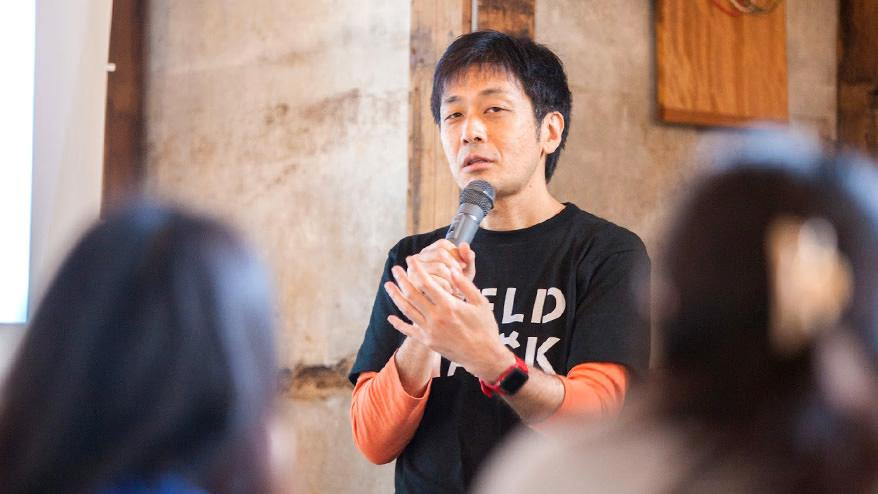This is the second part of Meguru Measuring Ruler, with guest Shigeru Kobayashi.
In the first part, we began by hearing Kobayashi's story from his time as a company employee to joining IAMAS, and then we asked him about his thoughts on activities that connect manufacturers, makers, and users, such as Maker Faire Tokyo and Field Hack.
In the second part, we talked about Kobayashi's style of working on multiple projects simultaneously and what he aims to achieve through his activities.
(Interviewer: Ken Uehara / Interview structure: Kensaku Saguchi)
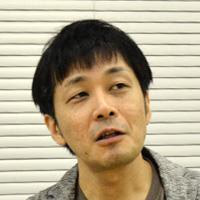
Profile of Shigeru Kobayashi :
PhD (Media Design, Keio University Graduate School of Media Design). After working for an electronic musical instrument manufacturer from 1993, he joined IAMAS in 2004. In addition to developing toolkits such as Arduino Fio, he explores methodologies for people with diverse skills, perspectives, and experiences to work together to create innovation, utilizing open source hardware and digital fabrication. His publications include " Prototyping Lab 2nd Edition ."
When multiple projects are carried out simultaneously, a synergistic effect is created.
Uehara : For example, today's interview took place between your work in Tokyo, but isn't it difficult to pursue multiple activities at the same time? It's been a hot topic for me lately (laughs).
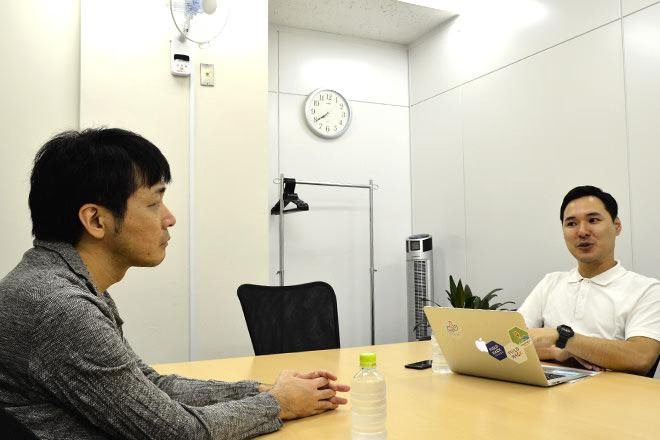
Left: Professor Kobayashi, Right: Uehara (interviewer)
Mr. Kobayashi (hereafter, titles omitted)
I think that if you only do one activity, there will always be times when things stagnate along the way. The people who participate get busy with other things, the business situation changes, relationships between members become difficult, etc. These are things you can't control.
So, although there may be times when which is the heaviest, I always try to keep multiple activities running at the same time. That way, even if one stops, I can switch to doing something else in the free time.
Also, methods that work well in one place can sometimes be used in another. Because it worked here, try applying it to another activity that you are working on at the same time. Of course, focusing on each one individually is one way to go, but I like to combine multiple things and run them together, trying to create a synergistic effect between them.
When a problem arises in an activity, I ask myself, "What if we did it differently?" "What would happen if someone else was doing it?" "What if we replaced it with a different activity?" The more complicated and intertwined something becomes, the more I try to break it down.

Uehara: Do you ever get influenced by other projects and come up with different ideas?
Kobayashi (hereafter, titles omitted)
That always happens.
Some people use the term "client work and self-work," but the way you see it is different depending on whether you're helping someone else take the lead or taking the main role.
It's not a matter of which is better, but doing both at the same time changes your perspective and you can find good ways of doing each. As I was talking, I was reminded of something an animation director said: he alternates between directing himself and working as a staff member under another director to get inspiration. Sometimes, changing your perspective can help you find new ways of solving problems.
Still, there is no methodology for doing everything perfectly from zero to 100. Through trial and error, I have finally come to understand that it might be possible to go from zero to one in this way.
Uehara: Is there something exciting about starting something without knowing the outcome?
Kobayashi : I think there is a high possibility that it will lead to something very interesting. One of the initiatives we did long before we started "Field Hack" was the "iBeacon* Hackathon". We held it four times in a short period of time in Ogaki City, Gifu Prefecture, where IAMAS is located, and we mistakenly thought that iBeacon, the location information app that Apple included in iOS7, would become explosively popular. We held a hackathon to explore the possibilities of devices that can connect to iBeacon.
*iBeacon: A low-power, low-cost communication protocol that uses ultra-low-power Bluetooth LE (Bluetooth Low Energy). A trademark of Apple. An iPhone app can catch radio waves from beacons that transmit special identification information and trigger specific actions. (See the business concept " iBeacon Changes Cities ")
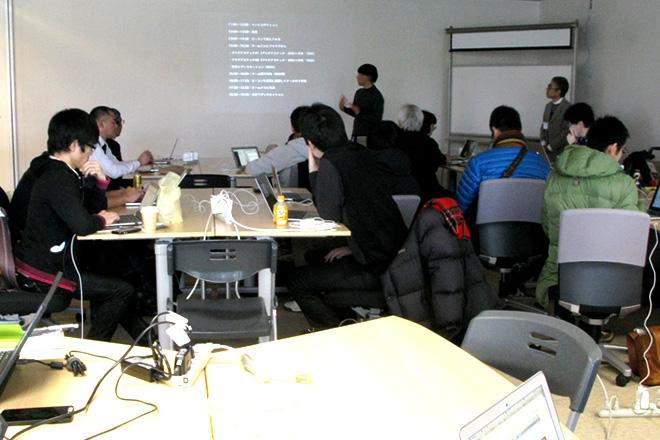

Top and bottom left photos: Scenes from the first iBeacon Hackathon held in Ogaki City, Gifu Prefecture in 2013.
Bottom right photo: At the 3rd iBeacon Hackathon, an experiment was conducted to monitor the location of a bus using an iBeacon attached to it. (From the BLE Department iBeacon Hackathon )
The first time, we started off completely on a shoestring and was probably the first such attempt in the world, or at least in Japan, but from the outside it looked like we were just "working on some kind of obscure technology in some unknown place."
Who will participate? The organizers were skeptical, but the people who came were people with a very keen sense of purpose. Moreover, only 10 to 20 percent of the participants were from the local area, and although they expected people from the Chubu and Tokyo areas, there were participants from as far away as Silicon Valley. The person had an office in Japan and worked in Silicon Valley on a daily basis. He had just returned to Japan and found out about an interesting hackathon, so he said, "I don't know where Ogaki in Gifu is, but I'll go."
We were surprised, too, but when you create a space, people will flock to it, and because they are such capable people, a network is created, and connections are made such as, "Would you like to work on a new project together?", and other people hear rumors, find it interesting, and join in, and something happens.
Uehara : You're really trying out a lot of different things.
It all depends on Kobayashi (laughs).
People who take on new challenges
I want to create an environment where it is easier to take on new challenges.
Uehara : Professor Kobayashi, what do you want to do next?
Kobayashi
One of them is to introduce people who are taking on new challenges.
For example, there are makers at manufacturers such as Sony and Panasonic who are starting to do some interesting things. They make things as a hobby, but it's not just a hobby, they're people who are using it in their main business and coming up with ideas to create products that have never been done before.
We will continue to highlight the activities of makers within these manufacturers and widely introduce them to the public.
Also, there are people for whom the term "startup" is appropriate and those for whom it is not, but there are also makers who create products and services and bring them to the world without originally belonging to a manufacturer. I would like to feature the activities of such people as well.
The English spelling of both maker and manufacturer is "Maker." However, in the context of the "Maker Movement," it can be written in Japanese as either "maker (company)" or "maker (individual creator)." It's a bit confusing to say, but I'd like to spread the word by intentionally combining the words "maker" and "maker."
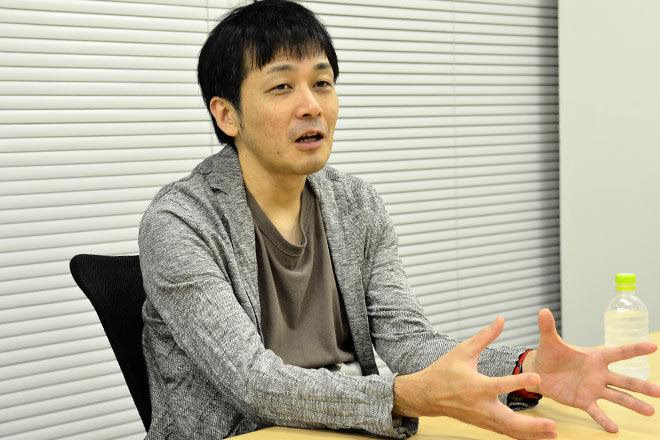
Another thing is to create an environment where it's easier for people to take on new challenges. When you want to take on a new challenge, you don't have to bet your life on it and get into debt to start, but there are ways to take on a more minimal challenge. If more people know about this, I think we can create a society where people can take on challenges more easily.
Currently, in Tokyo, anything goes, so it may be easier to take on new challenges. But the smaller the community, the more difficult it becomes.
It seems wrong for people to be unable to recover when something happens there, so I am thinking about how we can create a society where people are encouraged to take on challenges.
If we were to use the words the government uses today, it would suddenly become things like work style reform, human resource mobility, and regional revitalization, which sounds like we're suddenly going to get subsidies and work hard. So we've chosen not to use those words, and although it may be a small, volunteer-based initiative, we think we can get the activity going ourselves.
What I think is very important at that time, just like "Field Hack", is how much the people involved stand on the same ground. If there is a hierarchical relationship, spontaneous collaboration will not occur.
In the case of "Field Hack", we proceed in a situation that is rare in normal businesses, where there are no clients. I think that we are able to achieve results that are not seen in other initiatives because we have a relationship of everyone standing together, not a relationship of ordering and receiving.
My impression of Monosus has changed from "What is this?" to a company where interesting things are happening in down-to-earth ways.
Uehara: Finally, Professor Kobayashi, I'd like to hear your impressions of Monosus.
Kobayashi: When I first met the Monosus people, I thought they were mainly working on the web, but when I talked to them, I learned that they also had a farm in Kamiyama. What is this? That was my first impression.
After that, I happened to have a business trip to Thailand, where I got in contact with the president, Mr. Hayashi, and visited the Thai office, which made me even more curious about what kind of company it was.
When I went to a party at the Tokyo office, they were really particular about the food. It changed my impression that this is a company where interesting things are happening in a down-to-earth way, completely different from the sleek startup offices with their impressive reception desks.
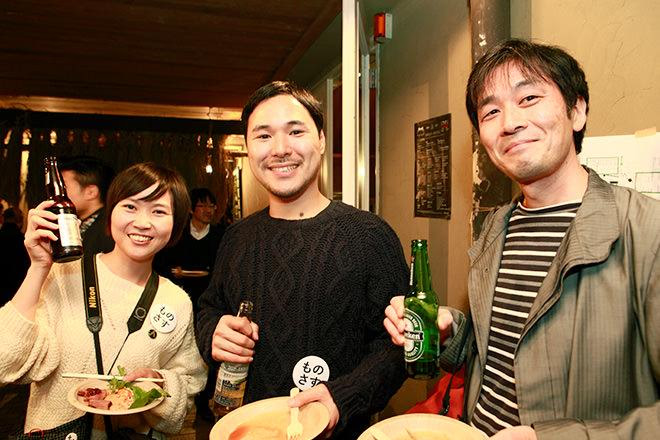
At the Monosasu Founding Anniversary Party held in November 2016. Professor Kobayashi is on the far right, and Uehara is in the middle.
In fact, I recently visited Kamiyama and felt the atmosphere on-site, which you can't get from Facebook or Instagram, and I thought it was interesting. I know it sounds cliché to say this, but in the future of Japan, I think big changes will occur, and initiatives like food hubs may become commonplace, and even if that doesn't happen, I think there will be a lot to gain from the challenges there.
Also, "Field Hack" is not such an easy initiative. We don't receive a lot of money from the participants, and we're not running it as a business, but the people at Monosus who are involved in it are thinking about how to get the best output and working in detail. I think it's amazing that they can work in that way.
Also, without that kind of attention to detail, I think that when it comes to the participants and the people involved in the organizers, there are times when the enthusiasm leaks out. It is because the people running the event are so attentive that everyone can concentrate and work on the theme. I think that this is possible because Monosas values the fact that it is not just something that happens on the Internet.
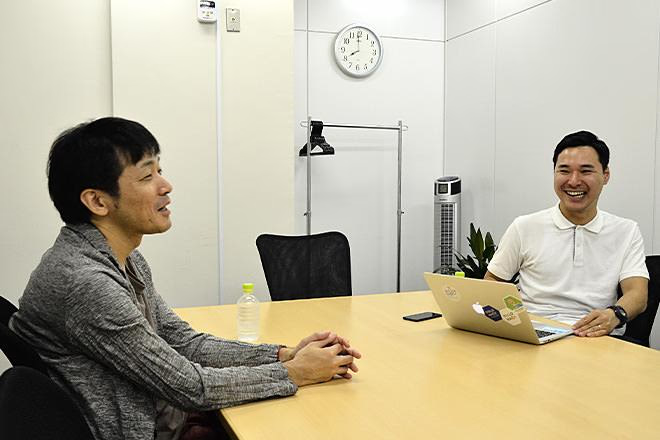
A letter from Uehara to Professor Kobayashi
I have many conversations with Professor Kobayashi, not only during work, but also during travel time and at social gatherings. However, as the interviewer and asking questions, I always felt like I was testing him a little bit whenever I spoke to him.
When I say testing, I mean, whether I can share my own thoughts and express them well in my own words. I think I was talking to Professor Kobayashi while checking these things. (Sorry, I'm being selfish.)
When I thought about why we take tests, I realized that it's because when Professor Kobayashi gives feedback and replies, he speaks frankly about his own experiences and the thoughts behind them, and responds with hints for my own thoughts.
At the same time, it's as if they're telling me that I have to choose the answer myself. There's always a sense of tension, but also a sense of comfort.
Thank you so much for always arranging my schedule so well!
Production Department: Ken Uehara
